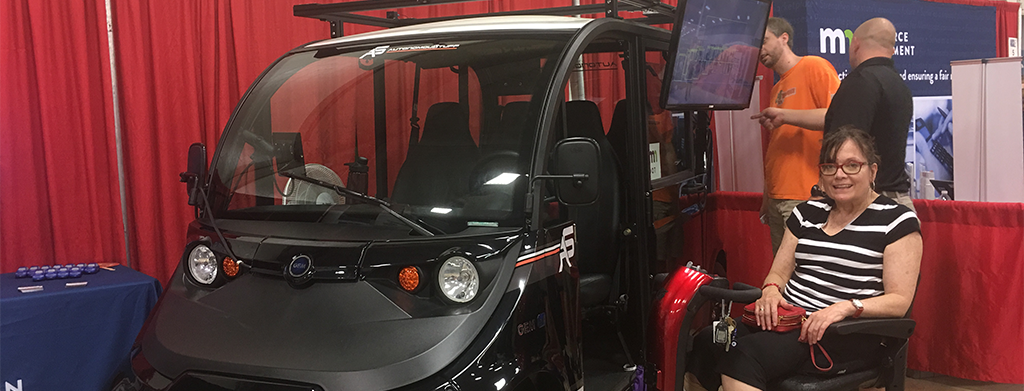 Connected and Automated Vehicles (CAV) have the potential to greatly impact the lives of people with disabilities. They could foster more independence and more choice for people to live, work, and play in their communities. The Minnesota Council on Disability is working hard to establish CAV policy standards that will ensure people with disabilities have maximum access to this technology.
Connected and Automated Vehicles (CAV) have the potential to greatly impact the lives of people with disabilities. They could foster more independence and more choice for people to live, work, and play in their communities. The Minnesota Council on Disability is working hard to establish CAV policy standards that will ensure people with disabilities have maximum access to this technology.
Overview
The Minnesota Department of Transportation (MnDOT) is currently exploring the safe use of connected and automated vehicles and is working to position the state as a leader in this fast-emerging area of technology.
Benefits of Automated Vehicle Technology
- Increased safety: Nearly 94 percent of fatalities are caused by human factors; automation has the ability to save lives.
- Greater mobility and equity: CAV may reduce transportation barriers by providing broader access for people to live, work and play where they choose.
- Economic and workforce development: Minnesota and its workforce are competing in a global market; this technology provides an opportunity to compete in the movement of goods, services and people.
- Efficiency: CAVs may reduce traffic congestion and improve traffic flow.
- Maximize health and environment: CAV could help us rethink the way we plan our communities to maximize health and sustainable transportation.
What Are CAVs?
Automated vehicles: Automated vehicles operate vehicle steering, acceleration, and braking without human driver input. These vehicles are designed so the driver is not expected to constantly monitor the roadway while operating in self-driving mode. (Automated Vehicles for Safety – NHTSA)
Connected vehicles: Vehicles that use different communication technologies to communicate with the driver, other cars on the road, roadside infrastructure and the “cloud.” These technologies improve vehicle safety and vehicle efficiency and commute times. (Vehicle-to-Vehicle Communication – NHTSA)
To learn more about CAVs and Minnesota’s efforts to adopt them, visit MnDOT’s Connected and Automated Vehicles page.
MCD Public Policy
This policy paper discusses the implications of CAV technologies for Minnesotans with disabilities and outlines the Council’s position on policy impacting the development of CAVs.
On Tuesday, March 12th, MCD Executive Director Joan Willshire testified in front of the Senate Transportation Finance and Policy Committee regarding SF 2173. This bill establishes provisions for autonomous vehicle testing in Minnesota.
Testimony Regarding Autonomous Vehicle Testing
Governor’s Advisory Council
To ensure that state policy addresses the opportunities and challenges created by CAVs, the Governor established the Governor’s Advisory Council for Connected and Automated Vehicles. One of the Advisory Council’s area of focus was accessibility and equity for all Minnesotan’s, including people with disabilities.
Learn more about the Advisory Council.
Articles of Interest
The Minnesota Council on Disability presents the following articles for people to stay informed about this exciting new technology.
- Despite High Hopes, Self-Driving Cars Are ‘Way in the Future’ (article – nytimes.com)
- Opinion: Disability must be considered in auto development (article – detroitnews.com)
- Cities Around the Country Are Piloting Low-Speed Automated Shuttles. This Is the State of the Practice. (blog post – volpe.dot.gov)
- Should Self-Driving Cars Have Ethics? (blog post – npr.org)
- Here’s what happens when police pull over a driverless car (article – washingtonpost.com)
- Autonomous Vehicles: Disrupting Transportation Obstacles for Americans with Disabilities? (blog post – fisherphillips.com)
- NCD Response to DOT Request for Information Regarding Automated Vehicles and Disability (publication – ncd.gov)